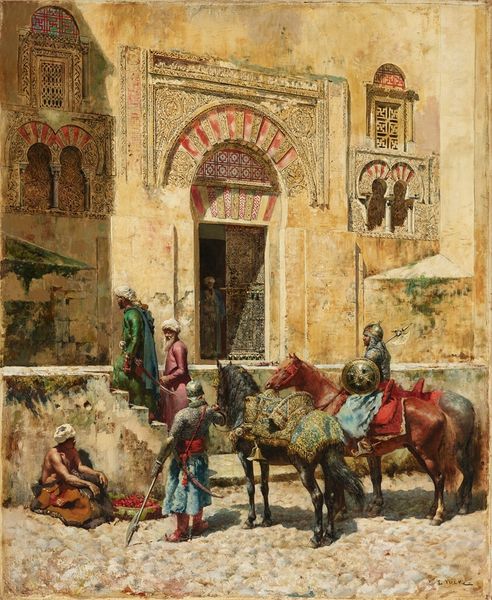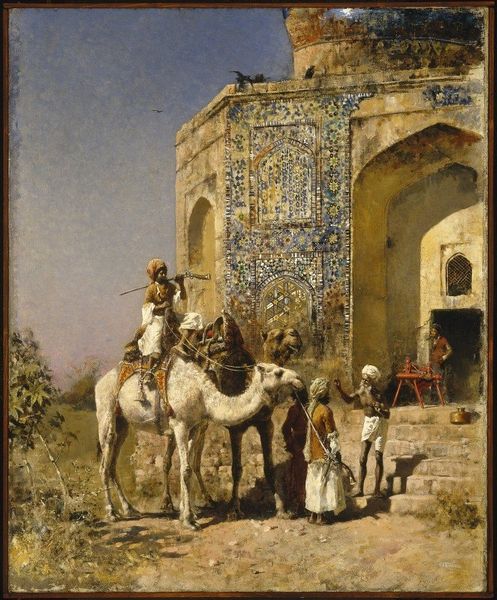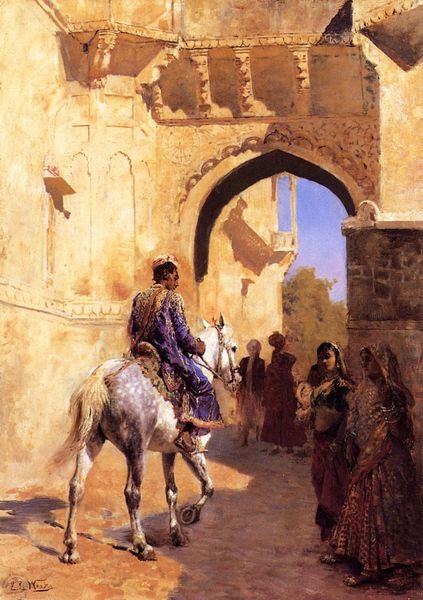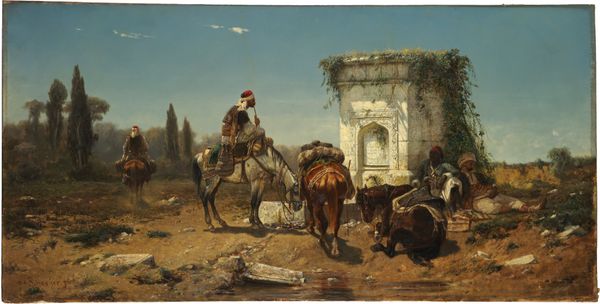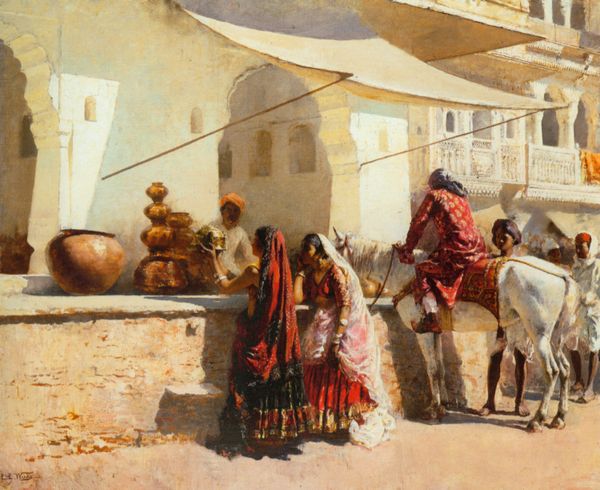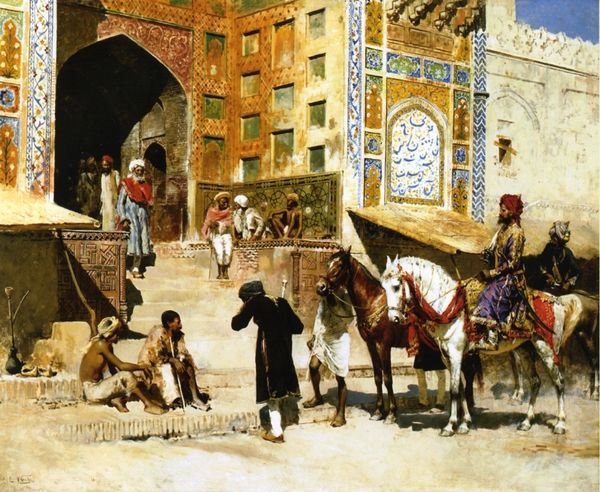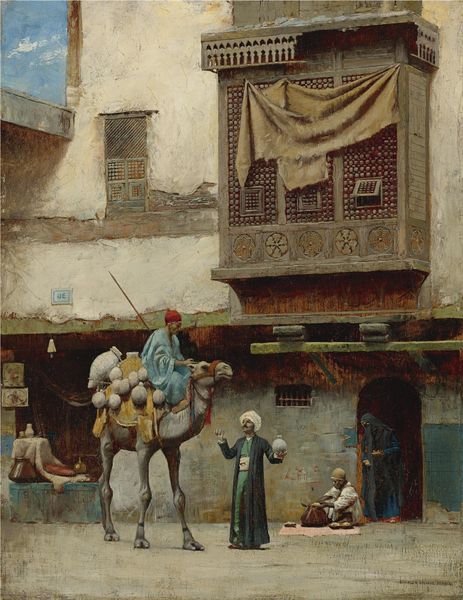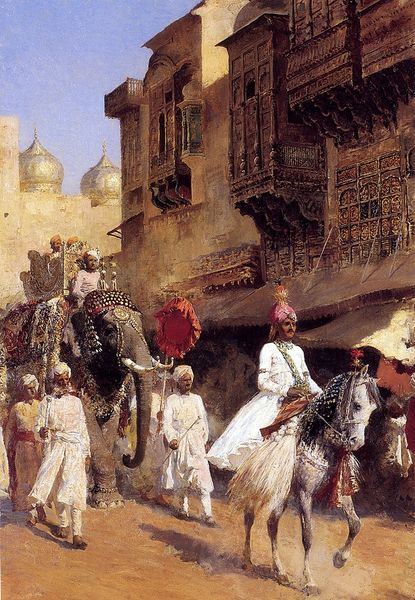
painting, oil-paint
#
portrait
#
gouache
#
figurative
#
painting
#
impressionism
#
oil-paint
#
figuration
#
oil painting
#
orientalism
#
painterly
#
cityscape
#
genre-painting
Copyright: Public Domain: Artvee
Editor: Here we have Edwin Lord Weeks' "Persian Horse Seller, Bombay," circa 1890. The use of oil paint gives it a rich texture, almost dreamlike in its portrayal of a bustling scene. I am really drawn to how Weeks depicts this seemingly commonplace event with such detail and vibrancy. How do you interpret this work? Curator: This painting exists within a complex historical framework of Orientalism. Weeks, a Western artist, is representing a scene in Bombay, framing it for a Western audience. It's important to ask: Whose perspective is being prioritized here? How might this representation reinforce or challenge existing power dynamics? Do you notice the architectural details and how they are rendered? Editor: I see how the architecture feels very romanticized, even exotic. There’s a sharpness to those ornate structures, while the figures almost blend into the background, like they're part of the landscape. Curator: Exactly! Consider the term "picturesque." Weeks may be intentionally creating a scene that confirms certain expectations and desires about the "Orient" for his viewers back home. And look closely at the seller: how does his attire, his pose, his very presentation, speak to or potentially distort our understanding of local culture? Editor: So, it’s less about factual representation and more about creating a visual narrative for a specific audience with particular expectations. I hadn't fully appreciated the power dynamics at play here. Curator: Precisely. By engaging with the historical context and acknowledging the artist’s position, we can move beyond a surface-level appreciation to a more critical and nuanced understanding of the artwork's place in cultural history. Editor: I am going to think differently about this image now. I learned to look at context, instead of at the first superficial feeling when viewing.
Comments
No comments
Be the first to comment and join the conversation on the ultimate creative platform.


